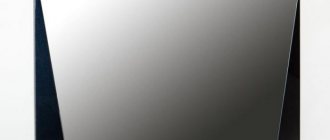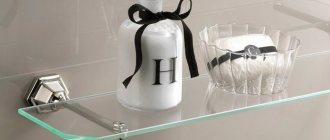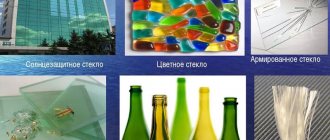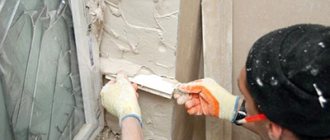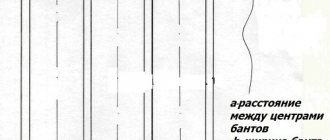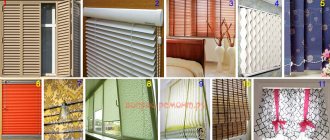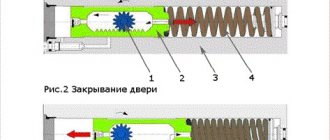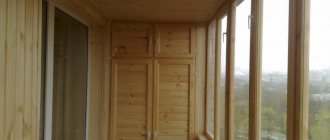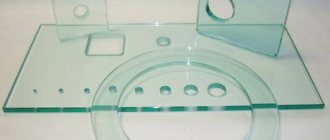Euroedge is a technology for processing the ends of glass, giving them a trapezoid shape. This eliminates residual stresses in the material, which makes the edges less sharp and more durable, preventing chips and cracks from appearing on them. Glass with a Euro edge is aesthetically pleasing, has a finished look and is safe to use.
Make an order
Fill out the fields below and our manager will call you back as soon as possible
Application for installation
Fill out the fields below and our manager will call you back as soon as possible
Prices for glass edge processing
The cost of processing the edge of a mirror depends on the type of work, the dimensions of the glass sheet and the order of additional services.
Do you want to know the exact price of your order? Leave a request on the website, after which our specialist will call you back, clarify the details of the order and indicate the final cost of the work.
We assure you that the processing of glass edges, the price of which will not break your pocket, is carried out by craftsmen who have more than 7 years of experience! Moreover, we often have nice promotions and discounts!
Processing technology
To obtain a Euro-edge, the edges of the glass sheet go through several stages of grinding and polishing. Using a machine, 2 chamfers several millimeters wide are removed from them at an angle of 45°, and the end is polished. Thanks to this, sharp edges are dulled, their surface becomes smooth and safe. After processing, the end takes the shape of a trapezoid. The Euroedge is ground using high-precision and expensive equipment. This operation requires great care and professional skills from the operating personnel.
Types of glass edging
We offer you a choice of 4 types of glass edge processing.
Grinding
Special grinding machines are used that allow you to create both straight and curved edges. The surface becomes rougher and safer.
Technical grinding
Sharp edges are dulled, making them safer.
Polishing
The edges become smooth and transparent, and the surface itself becomes aesthetically pleasing.
Facet
Artistic processing of the edge of the mirror with a bevel cuts off the edges at the required angle. This kind of work makes the design more expensive, because visually it seems as if the glass is decorated with precious stones that shimmer in the sun. There are several types of facet, namely:
- curvilinear;
- straightforward;
- double-sided
Types of edges on glass and mirrors
There is no need to process the edges for glass doors and windows, or for mirror frames. But when using objects such as shelves, glass tables, aquarium walls, etc., edge processing is simply necessary.
Edge processing on glass is carried out mainly for safety reasons. You can cut yourself on the raw edges and such products look unfinished. Edge treatment is also necessary to prevent chips and cracks.
This processing is carried out in two stages: first the product is ground and then polished. Polishing involves a process that makes the end of the glass transparent. When grinding, the end of the glass or mirror becomes matte. Therefore, grinding is done first, and then the glass or mirror is carefully polished.
Types of edge processing on glass and mirrors
Modern technologies make it possible to process edges using the latest modern equipment with the participation of experienced specialists.
Euroedge
During this processing, the end of the workpiece is polished. Euroedge is used straight and curved.
Facet
With this method, processing is carried out on the front side of the product. During processing, a chamfer is cut at a certain angle. The facet can be both figured and straight. Most often, orders using this type of processing include beveled mirrors.
Simple processing (edge dulling)
The treatment acquired this name due to the similarity of the surface after treatment with the top part of a pencil with an eraser. This treatment was nicknamed “under the pencil”. One end is made in the shape of a semicircle.
Shaped edge processing
With this type, the ends of the product are given unusual shapes, such as steps, herringbones, waves, etc. This treatment is applicable on glass with a thick base, for example, on countertops or kitchen sinks. This processing is carried out on professional processing centers.
Polished edge on glass
After processing using this method, the ends of the product become smooth and transparent. Polishing the edge of the glass gives the product a noble, presentable appearance and is more valuable than matte glass.
Edge sanding
With this treatment, the end acquires a rough appearance and becomes an opaque matte color. This treatment is more suitable for products in which the edge is hidden in the profile or is not visible during installation. For example, when tempering glass, grinding the edge is a mandatory operation.
Glass edging tools
Craftsmen use the following equipment to process glass edges.
To polish the edge of glass, craftsmen use professional grinding machines with abrasive materials, due to which it is possible to process both figured and straight edges.
To polish glass products, experts use soft fibers. Unlike grinding, polishing requires more delicate work, which is almost impossible to do at home.
The bevelling process is carried out using modern machines, which, according to a given program, apply an accurate cut at the desired angle.
Three end edge shapes
During the grinding process, the edge of the mirror is given a certain shape depending on the desired result. The pencil-style finish looks especially stylish, giving the edge an oval shape. The vast majority of mirrors are processed in this style, but there are other types:
- Euro edge. It has a trapezoidal shape. The edge is ground in three planes - the end and two chamfers with an angle of 45 degrees relative to the surface of the mirror. Polishing in the form of a Euro edge is also possible.
- Facet. Bevelling means grinding the edge on the front side of the mirror surface. The cut is made at an angle from 3 to 45 degrees, and its length is selected based on the thickness of the workpiece.
Less common types of finished edges are double pencil, waterfall, straight edge, and a few others. Regardless of the resulting shape as a result of grinding, this process leads to an increase in the strength and attractiveness of the mirror surface. It is for this reason that it is worth purchasing such mirrors.
Glass and mirror processing
Working with glass is not only cutting glass, but also a wide range of methods and methods for processing it. With the help of special devices and, of course, professional craftsmen, it is possible to cut glass of any thickness, shape glass, sandblast it, grind and polish it, drill holes in it, process its edges and many other works. A similar list, even broader, applies to the processing of mirrors. Some types of work on glass and mirrors, as well as all kinds of glass cutting, will be discussed in more detail in this article.
Cutting glass and mirrors
For doors, furniture, the manufacture of stained glass and other products, not only straight-line cutting of glass is often necessary, but also shaped, figured cutting, as well as cutting according to templates, cutting triplex glass. Specialists are assisted by the latest machines for loading and cutting glass, produced in different countries. Using most machines with software, glass is cut and broken with a thickness of 1 to 19 mm.
Processing the edges of glass and mirrors
Just 15-20 years ago, for many products (windows, doors, etc.), cutting glass was the final stage of its processing. With the arrival of the production of windows and doors from Europe, glass cutting left the last line in the list of types of work with this material and in this field of work. The following operations were required with this fragile material: dulling, grinding and polishing the edges of glass and mirrors. All these operations are performed with an abrasive tool with varying degrees of grain size. Now all equipment for polishing and grinding glass can only be used with a hygienic certificate. Machines are usually equipped with reliable exhaust ventilation for abrasive and glass waste or vacuum cleaners, which preserve the health of the specialists operating them. You cannot perform these glass processing operations on your own without special equipment at home. Microparticles of glass and abrasive will quickly end up on the mucous membrane of the eyes and in the lungs.
Using modern equipment, with fine-grained abrasive in a specialized workshop, the surface of the edges on glass and mirrors becomes optically transparent. To obtain a matte surface, coarser abrasives are used. Modern machines for various types of glass edge processing usually operate in two modes: wet and dry abrasive modes.
Before processing reinforced glass, all wire residues are removed from its surface with pliers.
Holes in glass and mirrors
Modern machines cope with drilling holes in glass and mirrors with a diameter of 4 to 80 mm and a thickness of 2 to 25 mm. Depending on the type, thickness and diameter of the holes, the rotation speed of the drill on the glass is adjusted. This tool has diamond bits, and the drills can be with or without countersinks. Glass drilling machines have a wide range. This equipment has both manual drive and settings, and numerical control; with both one and two drilling heads (upper and lower).
Sandblasting
Quite often, cutting glass and mirrors is accompanied by artistic processing. Sandblasting is the most in demand today. It gives the surface of glass and mirrors a matte tone. This process is carried out using a special abrasive and applying it to the surface using high pressure. Depending on the equipment settings, the matte pattern can have different processing depths and grain sizes.
Other popular glass processing methods
Nowadays, cutting glass can be accompanied by an even greater number of operations with it, and often the opposite is true, i.e. It is necessary to cut glass with a decorative or tinted film applied, cutting glass with a reinforcing film, cutting patterned or painted glass. Similar operations (coating with various types of film, even painting with varnish or paint, etching, etc.) can be carried out after cutting the glass and processing the edges.
SERVICES
Edge processing of rectangular products.
Product dimensions min 150 mm – max 2700 mm
Thickness of the processed product min 3 mm – max 20 mm
Grinding is an operation in which the edge of the glass is processed using diamond cup wheels. At the same time, all irregularities and chips are removed from the edge of the glass and it acquires a matte color.
Polishing is the final processing operation, after which the glass edge acquires a transparent color and a smooth surface.
Bevel is a processing of the edge of a mirror or glass in which the front chamfer is removed at an angle of 3-5 degrees relative to the plane of the product. The bevel creates many edge refractions, due to which the product becomes a complete element of the interior. Panels made of mirror tiles processed using this method look elegant. The bevel width on our equipment is set to 15 mm. At the customer's request, it is possible to produce products with a chamfer width from 5 mm to 25 mm. The bevel is removed only on straight sides; restrictions on the configuration of products are clarified with the acceptance specialist. Product dimensions min 200mm max 2700mm.
Drilling and countersinking of holes is carried out on an automatic double-sided machine, which ensures the alignment of the holes. In addition, there are no restrictions on the relative position of the holes. Countersinking of holes is the processing of holes in order to obtain conical recesses, supporting planes around the holes. Hole diameter from 4mm to 80mm Glass thickness - 4-25mm
Sandblasting - Quite often, cutting glass and mirrors is accompanied by artistic processing. Sandblasting is the most in demand today. It gives the surface of glass and mirrors a matte tone. This process is carried out using a special abrasive and applying it to the surface using high pressure. Depending on the equipment settings, the matte pattern can have different processing depths and grain sizes.
Engraving is a method of applying a design and/or inscription to the glass surface using an engraving tool. The engraving width varies from 0.5 to 5 mm. Engraving color: matte white.
Coating the edges of mirrors with varnish - a protective varnish coating on the edge of the mirror ensures long service life of the product in its original form, protects the amalgam from corrosion when exposed to aggressive environments (soap, detergent acids, surfactants)
The processing of glass edges significantly affects the strength of the product.
Ultraviolet gluing is a modern technology for gluing translucent sheet glass structures. The process of UV glass gluing is very simple in its application - the UV glue is exposed to ultraviolet rays, polymerization occurs and the materials being glued are firmly bonded to each other. UV glass gluing has some advantages: the glued joints are highly durable, and the effect of transparency is maintained on the bonded surfaces. But there are also disadvantages: it cannot be used for gluing aquariums, it does not hold dynamic loads well. Using UV gluing, we produce: glass display cases and cabinets for various purposes, shelving, tables, stands, stands for television and video equipment, counters and furniture.
› Glass bevelling
Bevelling is a decorative procedure for processing glass edges, which is widely used in the manufacture of furniture and mirrors for interiors. The edge of the glass blank is cut at a certain angle (up to 45°) and the glass acquires a beautiful frame. The edges obtained through this procedure can be polished to a shine or made matte. In such a bevel, the sun's rays are refracted, which create a whole range of different shades, due to which beveled glass products are used in creating exclusive interiors. Faceted stained glass windows and beveled mirror panels have found their application in decorating walls, doors, interior partitions, and cabinet furniture.
The facet can be straight, curved (curly), double and double-sided. Straight bevel is carried out on a workpiece with right angles, forming a bevel of up to 40 mm on glass with a thickness of 5-15 mm. Figured bevel is performed on curved products. A double bevel is performed in two passes - after the first bevel, another one is performed at a different angle. Double-sided bevel is performed on both sides of the glass blank. The angle of the bevel is in the range of 3-45 degrees.
How to cut glass correctly with a glass cutter
Before you start cutting glass (or mirror), you need to prepare all the necessary tools.
For work we will need:
- Glass cutter (diamond or roller).
- Long metal ruler.
- Pliers with rubber pads (for breaking glass).
- Rubber mallet.
You also need to take care of the glass itself. It should be at room temperature, dry and clean. To clean the glass from dust, you can use a rag or a baking soda solution. This point is very important, since when working with “dirty” glass, a split may occur not along the cut line but in another place and the glass cutter itself will fail faster.
- Glass must be cut on a flat surface. To do this, you can place it on a workbench or table that is covered with a soft cloth.
- The glass to be cut must lie flat on the table surface.
- Next, you need to apply a wide wooden ruler at a distance of 1-2 mm. (for a roller screw) and 3-4 mm. (for diamond), then run the tool along the entire length of the glass, starting from the far side. The self-tapping screw must be kept perpendicular to the glass.
- If everything is done correctly, a thin colorless mark will remain on the glass, and the glass itself should produce a characteristic crackling sound when cutting.
- If the glass holds together, but the cut line is not straight, it means you are pressing hard on the tool, or you are working on the wrong side.
- Next, the cutting line must be moved evenly to the edge of the tabletop so that it protrudes by 3-4 millimeters.
- Glass up to 5 mm thick. break off with both hands with a sharp downward movement. In this case, hands should be positioned along the edges of the glass and protected with gloves.
- If the glass is thicker, apply several light blows with a rubber mallet along the cutting line, and then break it off in the same way.
- Pliers with a rubber pad are used if it is necessary to break off a very thin part.
MasterGlass: Center for Glass and Mirrors
Services:
Know
Nobody usually does perfectly smooth edge polishing in production; most often, the end of the glass with such processing has a transparent appearance, but the surface with either vertical or horizontal waves / notches is barely noticeable by sight or touch
Glass/mirror edge processing is the most in demand and important service after cutting. When they talk about glass processing, they mean how the edge of this material is processed.
Why do you need to process the end of glass or mirror?
End processing is necessary in order to:
- 1. Make the ends of the glass injury-proof.
After cutting glass/mirror, the edges of the material become razor sharp, and even if grabbed carelessly, they can leave quite deep and unpleasant cuts.
- 2. Remove cutting irregularities.
The thicker the glass, the more difficult it is to cut it without “shimmers” (shimmers are bevels, irregularities on the edge of the glass that form after cutting), in addition, there may be small chips on the edges and the cut itself always looks uneven, but the glass breaks very well light and shines, but in untreated glass/mirror the edge glitters and catches the eye with its irregularities and sharpness.
- 3. Give a beautiful and noble look.
A well-processed edge of the glass gives it a very expensive and neat look, and the shimmer of light in the facet is sometimes mesmerizing.
- 4. Necessary for gluing glass using UV technology.
- 5. Increasing the strength of the material.
During the processing, all microchips present on the edge of the glass/mirror are removed, thus the “tension” is removed from the sharp edges and the glass has nowhere to crack, because Cracks usually appear from places with microdamage to the edge of the glass or holes. Thus, the material itself does not become more durable, but the risk of cracks is greatly reduced.
Types of glass/mirror edge processing
There are different ways to process edges:
- Partial processing - Partial processing refers to the simple dulling of the sharp edges of the edge - these are two edges on each edge of the glass, only chamfers are made (see diagram) The edge itself is not processed. The “stress” is removed from the glass, making it less likely that the glass will burst during use.
- Matte processing (Euro-edge matte) - The end of the glass/mirror and two edges are processed, and after processing the edge becomes a white matte color, slightly rough to the touch. On tinted bronze and gray glass, this treatment does not look very good, because... the color varies greatly, we recommend that any dark tinted glass be given a matte finish with varnish or a polished finish.
- Matte processing with varnish coating (Euro-edge matte with varnish) - First, matte processing of the ends of the material (Euro-edge) is done, then these ends are wiped with a special compound, it impregnates the end of the material, as a result of which the whiteness disappears and the color of the ends becomes several tones darker.
- Matte processing (hemisphere) - The ends of the glass/mirror during this process take the shape of a hemisphere (lens) without chamfers, i.e. The edges become rounded and matte white.
- Polished processing (polished euro edge) - The ends of the material after such processing become smooth and transparent like ice, with beveled transparent edges. The larger the glass size you need to process, the darker the end of the material will look, because... Glass in its mass has a tint (green or blue), so ideal transparency will only be at the ends on the narrow sides (approximately 100-200mm wide). However, if a light source is directed at the edge, it will shine through it. Polished processing looks much more expensive and more beautiful than matte.
- Bevel - A very interesting type of glass/mirror processing, most often done on a mirror. During the processing process, the edge of the material becomes beveled at an angle (you have seen how knives or axes are sharpened, the same will happen on a mirror), thus the material acquires a wide or narrow beveled edge (bevel width) + 2 processed chamfers and a processed edge. The facet refracts light very beautifully and plays in the sun, combining mirrors with facets you can achieve an incredible effect.
- Figured processing (ends) - The ends of the glass / mirror can be given different shapes, (in the form of a herringbone, double ledge, etc.) such processing is used on thick glass, most often for the manufacture of glass countertops or kitchen sinks, it is produced by a special glass milling center , diamond cutters, changing the cutter you get a completely different face shape.
What is Euro edge?
Euroedge is a type of processing of the glass/mirror end (see diagram), it consists of 3 elements - 2 chamfers (blunting the sharp edges of the material) and an edge - processed in a straight line, can be either matte or polished.
Best wishes,
team
How does polishing happen?
The glass edge grinding technology allows you to give the surface a matte effect, with a slight roughness with a greenish tint. However, after processing with a grinding machine, small cracks or scratches are acceptable. To eliminate them, the second stage of processing is used - polishing with soft fibers. As a result of exposure to a polishing machine, the edges become transparent and smooth, and the product becomes aesthetically attractive. Unlike grinding, polishing performs a finer treatment, the characteristics of which depend on the thickness of the workpiece.
All-glass products have a polished end, giving them a striking design. It is also necessary to carry out polishing before tempering glass products. Polishing work begins only after grinding is completed, using the finest abrasive grit, since due to the low abrasiveness during polishing, large defects will not be removed from the edge.
